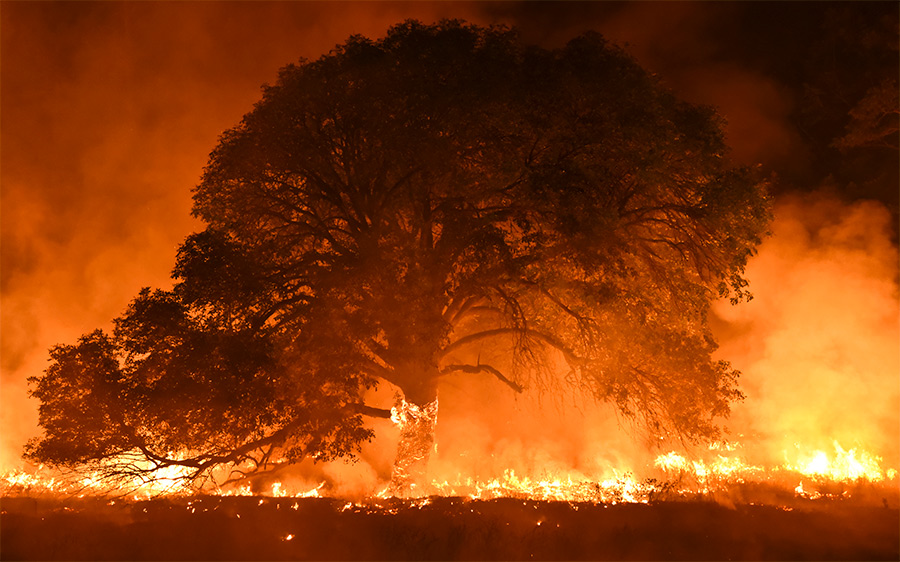“In the past two and half years, California has experienced an unprecedented number of wildfires which have both directly and indirectly impacted our public schools,” Committee Chair Patrick O’Donnell (D-Long Beach) said. “This hearing will help us reflect upon any lessons learned, areas where state policy could improve conditions for school communities as they prepare for, respond to and recover from future natural disasters. This isn’t just about the past but about going forward as well, which I know many communities are working hard to do.”
Staff, administrators and teachers from those communities, stretching from Montecito to Santa Rosa to Butte County, shared their experiences at the hearing to help with that process.
From mental health services to budgets, the devastation and displacement have been costly both socio-emotionally and financially to school communities, the panelists said.
Several speakers highlighted the need for funds to hire more trauma counselors to help students and staff process the events. David Smith, a teacher in Paradise Unified School District, for example, shared before and after pictures of his destroyed school building and described students (who now attend school in retail outlets) still unnerved by certain noises and environments. Zoe Miller, a teacher from Santa Rosa City Schools, said her only possessions were those left in her classroom after she lost her home in the fall of 2017. It took months for her and many colleagues to feel fully ready to teach again, she said.

Educationally, students lost instruction time due to school closures and missed days. Amy Alzina, superintendent/principal of Cold Spring School District near Santa Barbara, estimated her students missed about 10 percent of the academic year due to fires and subsequent landslides. Elsewhere, school districts far from the blazes still closed or cancelled outdoor recess and athletics due to smoky air. Academic counselors, too, pivoted from advising students on coursework to helping them find housing and other services.
How best to respond to these challenges in the event of future emergencies is an open question. Adding to the issue, many school leaders are not trained in crisis response and assessing safety thresholds for opening schools.
“Educators are [suddenly] expected to act as public health experts,” Steven Herrington, Sonoma County superintendent of schools, said of the current system. That system does not have established standards or scientific consensus on safe air quality following toxic smoke, or campus safety and cleanup due to ash and other debris. Even smaller issues such as the effectiveness of face masks protecting from smoke are unsettled.”
For now, educators are developing their own responses and best practices. In fire-scarred Butte County, CSBA Immediate Past President and Butte County Office of Education trustee Mike Walsh said, “The challenge was that our students were displaced with almost every one of them having no home to return to after the evacuations were lifted, and an entire town having been taken off the map in the middle of a school year. That meant that every school, traditional school or charter school, public or private, was in crisis and we chose to serve them all. Each board member took on a different responsibility such as helping coordinate trauma support, updating state agencies, and working with legislators to secure long-term funding.”
- Maintaining a state task force involving multiple agencies and technical experts to standardize fire-response protocols
- Developing a wildfire emergency toolkit for county offices of education and school districts
- Training school leaders on fire-specific emergency response
- Ensuring waivers of state requirements for average daily attendance, class sizes and physical education classes in the event of a fire emergency
- Funding for increased transportation costs and school buses
- Funding for bilingual counselors for English learner families
- Hiring financial experts to assist local educational agencies with state and federal agencies protocols and grants
- Providing supplemental funds to help schools and districts pay for unexpected costs
- Establishing school liaisons to work with local, state and federal authorities during emergencies
- Allowing for Field Act flexibility to allow schools to more easily relocate to temporary facilities.
These suggestions are being considered as the California Department of Education works on a path forward ahead of future fire emergencies. “We are learning as we go,” State Superintendent of Public Instruction Tony Thurmond said at the hearing “[Before the fires] no one considered transportation costs … or the number of counselors a school might need. We need help and we need to make sure we are properly resourced long-term to support these new demands around education.”